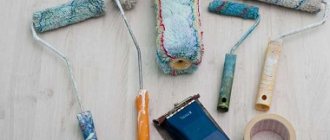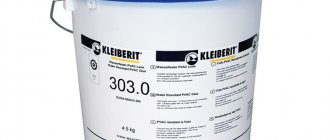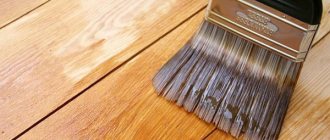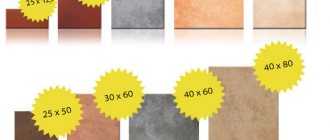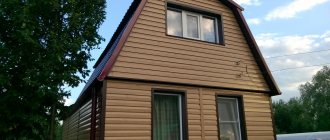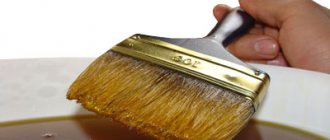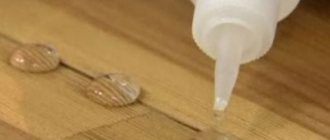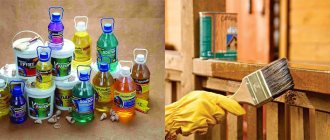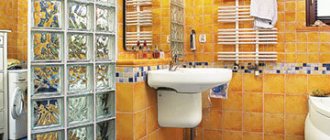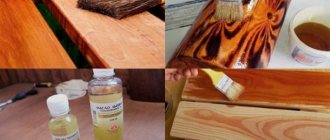Board depending on sawn edges
Edged board
A common lumber used in construction and finishing work. It is used when laying floors (rough and finishing), installing partitions, lathing roofs and performing other operations. Edged boards include blanks whose edges are sawn perpendicular to the faces.
The edges of lumber can be parallel or non-parallel. In this case, the permissible wane parameters should not exceed the standards established by the current regulatory and technical framework.
Edged board.
Single-sided edged board
One-sided edged workpieces are considered to be workpieces with one edge sawn perpendicular to the faces. The amount of wane on it should not exceed the values specified in the relevant standards for edged lumber.
Unedged board
Lumber with unsawed or partially sawn edges, with a wane more than acceptable in edged lumber.
Used in rough work for installation of flooring, roof sheathing, sheathing and similar structures.
Their features:
- lower cost;
- lack of attractive appearance.
Unedged board.
Types of wood
The following types of wood are used to make lining, panels, and block houses:
- Pine . It has increased practicality and accessibility. This material is used for the manufacture of various panels for finishing premises - lining, eurolining, block house, imitation timber. It has strength, increased resistance to moisture, and thermal insulation properties;
- Larch . This variety is similar to pine. But manufacturers claim that larch products are much stronger. A room decorated with larch looks natural and rich;
- Linden . Linden panels have a smooth surface with a beautiful texture. They have increased strength, moisture resistance, and excellent heat retention in the room. Linden panels can last for several decades;
- Oak and Canadian cedar . These two types of wood have the same qualities, and products made from them are of top class. Panels made of oak and Canadian cedar are very expensive, but their qualities fully justify the high cost. High strength, moisture resistance, increased density, beautiful appearance. Panels made from this wood can last more than 50 years.
Board depending on the sawing of the outer face
Gorbyl
It includes cuttings from the sides obtained after sawing the log. One surface of the slab is sawn, the other remains untouched or partially sawn. In this case, the thickness and width of the thinner end must comply with current standards.
Gorbyl.
plank croaker
A slab whose outer surface is partially propylene is called plank.
Lagging
This type of product includes wood blanks with an internal sawn face. In this case, the outer layers can be either unsawed or partially sawn.
The slab is the first cut along the entire length of the log, and the obapole is the slab whose length is less than the length of the log. Most often it is formed when sawing the butt part of the trunk and trunks with a high degree of taper.
Boardwalk obapole
Its difference from the slab is that the outer face is sawn along a length exceeding half of the workpiece.
Boardwalk.
Croaker both sex
Croaker includes both floors with external unsawed layers (or partially sawn to a length of less than half of the workpiece).
Croaker of both sexes.
Why is the use of wooden materials justified?
Before deciding whether to decorate the walls of your home with wood, you should answer the question of why this is justified. Decorative finishing of walls with wood allows you to achieve durability of the coating. There are no special requirements for the surface to be finished, which means the installation process is simplified, you save time and money, and in the end you get a room decorated in a modern style.
It is worth choosing this particular wall decoration for another reason that the surface is simply ideal. Even the largest unevenness in the base can be hidden, as can defects under the wood trim. In this case, a ventilation gap can be arranged between the two bases, where not only additional layers of the construction “pie” are placed, but also all communications that in other cases would have to be taken outside and subsequently covered with cable ducts.
Even over time, this finish will emit a pleasant smell. Natural wood in the living room will allow you to relax in the evenings, and during the day, drinking in the light from the window, it will generate additional heat. Such walls create unique climate control, which means that wooden trim can be made part of a room for almost any purpose.
A variety of boards depending on what part of the log it was obtained from
Core board
Such a board or beam is obtained after sawing the central (core) part of the log.
Central board
This name is given to wood blanks obtained from adjacent sides after sawing the central part of the log. The central boards are obtained from the sides of the sawn core.
Side board
It is lumber obtained after sawing the sides of a log.
Where do we place emphasis?
In this case, it is not so important whether you decorate the interior of the house, its facade, or whether you want to enliven the landscape near the house. Your feature should be noticeable. There is no point in decorating a room filled with furniture or an overgrown area. Believe me, no one will appreciate this except you, and perhaps will not even notice.
Rough wooden furniture.
There are several main sectors in the house that are worth working with:
- The easiest way is to decorate the ceiling . You can’t find fault here; it can be seen immediately and from anywhere in the room. But when working with the ceiling, it is important not to overdo it with dark tones and large, eye-catching details. As a rule, one central point is played, from which derivatives come;
- When it comes to the bedroom, it’s hard to think of a better place for artistic delights than the wall at the head of the bed . It is not necessary to make a panel on the entire wall, it can only be part of it, but as you remember, this part should be noticeable;
An original solution for the bedroom.
- The choice of an accent point in the living room depends on the size and configuration of the room . In a standard living room, they usually work with two zones. This is the wall behind the central sofa and, of course, the main magnet of our time, the television, or rather the sector around the treasured screen. If there is a fireplace, then you can work with it, but without fanaticism, after all, the fireplace is an open fire, and you are going to decorate it with boards;
Old board in the bedroom.
- Another popular place in the house is the kitchen . The original wooden finish looks best in the dining room sector. That is, you need to work with the wall that borders or is closest to the dining table. Although the last feature is a chalk or slate board in the kitchen interior. By the way, it can be placed anywhere, the main thing is that it catches the eye and is convenient to write on.
You should not create wooden panels in the desktop area or on the apron. In this place, the wood will quickly lose its appearance and become covered with unpleasant stains. A durable varnish coating can only slightly delay the sad ending.
Typesetting panel.
As for the decor of the facade or the surrounding area of the house, it’s hard to advise anything here. I will only say that for these purposes the wood must be well treated with protective impregnations. In the open air, the so-called deck or terrace board behaves best. Traditionally, larch is used here, as it is quite durable and does not rot.
Board depending on cutting method
Cutting wood logs can be done in one of three ways: radial, semi-radial, tangential.
Radial
It is considered the best method for cutting logs. The cut runs through the center of the round timber. This makes it possible to obtain lumber that is more resistant to deformation and moisture. Features of boards obtained using the radial sawing method are uniform texture and a line of annual wheels running at an angle of 90 degrees.
Semi-radial
A method that allows you to save raw materials, but somewhat reduces the quality characteristics of the resulting workpieces. It is easy to identify such boards: since sawing is carried out at an angle to the center of the core, the slope of the annual rings is about 45 degrees.
Tangential
The peculiarity of the method is that the log is cut along a line offset from the center of the core by some distance. Such boards are characterized by an unusual and rich texture, but are more susceptible to moisture depending on its percentage, which leads to swelling or drying out and warping.
We are looking for a trick
Of course, it’s hard to argue with a natural wooden frame; it’s certainly beautiful, but frankly speaking, it’s no longer original. And then, the price of such eco-friendly housing is now sky-high.
Interior decoration with clapboard is a good thing, relatively inexpensive, and with the right approach it looks very decent. But there is no “smell” of any “zest” here. For the vast majority of people, the lining is firmly fused with places such as a bathhouse, dacha or loggia.
Wooden wall panels are also not suitable in this case. Firstly, they have clearly fixed dimensions, which significantly limits the designer’s flight of imagination. And secondly, the texture and color scheme of such coatings do not shine with originality and variety of forms. In my opinion, among the serial models, parquet boards look much better in the interior than wall panels.
Massive board on the wall.
If you want to show off your originality and extraordinary approach to design, then it is better to leave standard serial cladding alone. This does not mean that they should be completely excluded, but the share of promoted stamps in the created bright fragment should be no more than 30%.
Any instructions will only interfere with the creative process. Therefore, try to forget about stereotypes and taboos. And only then will you have a real opportunity to become a trendsetter in a new, hitherto unknown direction in interior fashion.
Board depending on surface treatment
Planed board
Such lumber is often called calibrated. This is the most common type of edged board. It is obtained after processing on a planing machine. Although such lumber is the most expensive, they have a number of advantages compared to conventional edged or unedged boards:
- precisely maintained dimensions of width and thickness along the entire length of the workpiece;
- smooth, clearly defined edges;
- absence of chips and other wood defects;
- no additional processing required.
Planed board.
Single-sided planed board
It is characterized by one layer processed on a planing machine.
Double-sided planed board
A workpiece in which both faces are processed by planing.
Budget options
If you want to decorate the walls with wood in your apartment, but the budget is quite limited, you should consider affordable solutions. There is one successful design idea, which consists of decorating only one of the walls with wood. Money can be saved not only on the wood itself, but also on the fact that the material is installed on only part of the wall, while serving as a decorative element, and also on the fact that the old finish will not have to be removed. This way you can decorate the hallway.
You can leave wallpaper or a layer of paint on the wall. To work, you will need an edged board, which is additionally coated with glaze. If the walls, for example, in the kitchen need to be completely leveled, you can use OSB. Oriented strand boards are suitable for creating a loft style, then the panels are not covered with another finishing material, but are left in their original form.
The only thing you will need to do is coat the wood with a clear varnish to give the wall a shine and make it more durable. Which is especially important in the kitchen.
Lining
If you want to decorate the walls with natural wood, you may prefer lining. It will look good in the kitchen. Usually it is mounted on a frame, but it is permissible to abandon it if the walls have a perfectly flat surface. Sometimes, even if this condition is met, lathing is still installed, since it significantly extends the life of the finish.
The distance between the wooden slats should be approximately 60 cm. When installing the frame, use a level, since the aesthetics of the finishing coating will depend on the correct placement of the slats. The frame can be based on timber, but quite often a steel profile is also used. The trim can be attached in different ways, for example:
- clamps;
- nails;
- self-tapping screws;
- construction stapler.
If you want to maintain the integrity of the wood finish, you need to use the first method. This fastener is in the form of steel plates. In order to understand how fixation is carried out, you need to look at the lining. You will see that on one side there is a groove, into the lower part of which the clamp is placed, and a screw or nail should be driven into the hole. The boards should be positioned as closely as possible to each other, and there should be practically no gaps. The only thing that needs to be left is the minimum distance for the thermal expansion of the lining.
Board
The walls around the kitchen unit can be decorated with wood using a board. This solution is one of the most budget-friendly. Considering the main types of this finishing material, we should highlight plank and parquet boards. The first acts as an alternative to false beams. These types of cladding are very similar, but planken does not have a tongue-and-groove lock. After installation, the lamellas resemble slats, which are located as closely as possible to each other.
Usually, only one surface is finished using planken. Wood finishing looks good if the base is steep, which means that work with this material is best done in the attic. This allows you to turn a minus into an advantage, turning your gaze to the hanging walls, against which one of the elements of the style is revealed.
Laminate
The walls of the room can be decorated with laminate. This approach looks very unusual. Fastening is carried out using the same adhesive method, if the surface is smooth. Liquid nails are used as a fixing compound. It is also convenient to work with construction silicone. If you want to install laminate using this algorithm, you will need to apply glue in the form of a snake on its back side, and then attach the product to the wall. The adhesive composition is also applied to the ends. Then the product is pressed to the surface, after which you can proceed to the next finishing element. Typically, this technique for decorating an apartment is used in living rooms or bedrooms. By choosing tongue-and-groove laminate, you eliminate the need to coat the tongue with glue. This element is a lock, so it allows you to connect the slats to each other.
OSB. Oriented Strand Board
Having familiarized yourself with the ideas of interiors, you can choose any materials for finishing, but wood is also suitable for leveling. It can be oriented strand board. Its installation is carried out according to the same algorithm as in the case of the other finishing described. At the first stage, you will need to carry out markings, then install a frame, which serves not only to level the internal walls, but also as the basis for heat and sound insulation.
Then you can start fixing the sheets, which are pre-marked and cut. The seams should not match, so the canvases are laid staggered. The slats for the frame can be attached through a block or onto galvanized corners. In the first case, you will need to drill holes in the walls for dowels. The second algorithm for carrying out the work involves marking the position of the bars. In this case, self-tapping screws are used.
Board depending on the type of wood
Every developer faces the problem of choosing building materials for a house. As for the boards, they can be sawn from softwood or hardwood.
Coniferous
Lumber from pine, spruce and larch is more often used in the manufacture of frames and load-bearing structures. The advantages of boards made from coniferous wood are ease of further processing and low ability to accumulate moisture. The resin released by coniferous trees, in addition to deteriorating the appearance, gives buildings another significant drawback - easy flammability.
Coniferous board.
Hardwood
Boards made of linden or birch and other deciduous trees are recommended for interior finishing work.
Hardwood board.
Choosing wood for interior decoration
Wood of different species is a constant favorite in exclusive interior design, and is perfect for use in creating both modern and traditional styles. Among deciduous species, oak, ash, walnut and maple are valued; among coniferous species, pine, spruce, cedar and mahogany are excellent choices. The first thing you will need, regardless of what finishing material you use, is to decide in favor of hardwood or softwood. The question is not as simple as it seems at first glance, and for a qualified answer to it, you would still be better off contacting your architect or contractor.
Once the category of wood has been selected, you can begin to select a specific type of wood. As assessment criteria, you need to take into account the following points:
- Availability of a particular material;
- How ready is the type of wood you are interested in for the processing you need?
- How labor-intensive will it be to maintain such a finishing coating?
- To what extent does the selected option meet the wear resistance requirements imposed by the operating conditions?
To content >>>
Standard board sizes and maximum deviations
Dimensions of softwood boards
In accordance with accepted standards, the following are subject to regulation:
- width and thickness of edged lumber having parallel edges;
- thickness of edged and unedged boards with non-parallel edges.
To facilitate the selection of boards of the required type in width and thickness, we suggest using the Table:
Table 1. Nominal dimensions of thickness and width mm
| Thickness | Width | ||||||||
| 16 | 75 | 100 | 125 | 150 | — | — | — | — | — |
| 19 | 75 | 100 | 125 | 150 | 175 | — | — | — | — |
| 22 | 75 | 100 | 125 | 150 | 175 | 200 | 225 | — | — |
| 25 | 75 | 100 | 125 | 150 | 175 | 200 | 225 | 250 | 275 |
| 32 | 75 | 100 | 125 | 150 | 175 | 200 | 225 | 250 | 275 |
| 40 | 75 | 100 | 125 | 150 | 175 | 200 | 225 | 250 | 275 |
| 44 | 75 | 100 | 125 | 150 | 175 | 200 | 225 | 250 | 275 |
| 50 | 75 | 100 | 125 | 150 | 175 | 200 | 225 | 250 | 275 |
| 60 | 75 | 100 | 125 | 150 | 175 | 200 | 225 | 250 | 275 |
| 75 | 75 | 100 | 125 | 150 | 175 | 200 | 225 | 250 | 275 |
| 100 | — | 100 | 125 | 150 | 175 | 200 | 225 | 250 | 275 |
| 125 | — | — | 125 | 150 | 175 | 200 | 225 | 250 | — |
| 150 | — | — | — | 150 | 175 | 200 | 225 | 250 | — |
| 175 | — | — | — | — | 175 | 200 | 225 | 250 | — |
| 200 | — | — | — | — | — | 200 | 225 | 250 | — |
| 250 | — | — | — | — | — | — | — | 250 | — |
Note: By agreement with the consumer, standard dimensions of boards may have other values not indicated in the table.
For unedged lumber, the width of the narrow face should have the following values:
- Board thickness from 16 to 15 mm - 50 mm or more.
- Board thickness from 60 to 100 mm - 60 mm or more.
- Board thickness from 125 to 300 mm - 0.6 thickness and above.
The width of the face, measured at the narrow ends of the non-parallel edges of the edged blanks:
- For lumber with a thickness of 16 to 50 mm - 50 mm or more.
- For lumber with a thickness of 60 to 100 mm - 60 mm or more.
- For lumber with a thickness of 125 to 300 mm - 0.7 thickness or more.
Nominal values of workpieces by length:
- export and domestic market: from 100 to 650 cm with an interval of 25 cm;
- production of containers: 50 cm or more with an interval of 10 cm;
- beams for the installation of bridges: 325 cm;
- export of lumber: from 90 to 630 cm with an interval of 30 cm.
Dimensional deviations must not exceed the nominal values established for:
- Workpiece lengths – -20 and + 50 mm.
- Workpiece thickness: 32 mm or less - no more than 1 mm in any direction;
- 40-100 mm – no more than 2 mm in any direction;
- more than 100 mm - no more than 3 mm in any direction.
- 100 mm or less – no more than 2 mm in any direction;
If the length of the workpieces is less than 150 cm, the maximum deviation values are not determined.
Dimensions of hardwood boards
Boards made from deciduous trees can be edged on one or both sides, or unedged.
Table 2. Current values of the nominal sizes of hardwood boards
| Length | Width | Thickness |
| hard rocks - from 50 to 650 cm with an interval of 10 cm | edged boards: 6 – 7 – 8 – 9 – 10 – 11 – 13 – 15 – 18 – 20 cm; one-sided trimmed and unedged: 5 cm or more with an interval of 1 cm. | 1.9 - 2.2 - 2.5 - 3.2 - 4.0 - 4.5 - 5 - 6 - 7 - 8 - 9 - 10 cm. |
| birch and softwood - from 50 to 200 cm with an interval of 10 cm | ||
| workpieces from 200 to 650 cm with an interval of 25 cm. |
Note: The narrow face of unedged blanks should not have a width of less than 40 mm.
Length and width parameters are specified taking into account 20% wood moisture content. In case of deviations from this value up or down, it is necessary to take into account the amount of shrinkage in accordance with GOST 6782.2.
Values of maximum deviations for lumber from deciduous trees:
- Length values – -25 +50 mm.
- Thickness values – up to 32 mm – 1 mm in any direction, from 32 mm and above – 2 mm in any direction.
- The width of edged boards is up to 100 mm - 2 mm in any direction, from 100 mm and above - 3 mm in any direction.
Decorating a house with imitation timber
Imitation timber is a molded product, a type of lining, actively used today for interior and exterior decoration of houses, saunas, baths, and apartments. Imitation of timber is not only an effective finishing material that allows you to create a feeling of comfort and coziness in a room, but it is precisely the material that allows you to completely transform the space of your home with minimal means. Such drastic changes will not require a global reconstruction of the building, moving walls and partitions.
To produce high-quality imitation timber, only wood that is carefully dried using a long drying method (8 - 12 weeks) is used for production. This is the time during which almost all the moisture has time to evaporate, and almost all varieties of fungi and wood-boring beetles, which require moisture to function, die. Imitation timber panels made in accordance with the technology do not crack, are not subject to warping, and practically do not change their geometry. Thanks to the presence of a tongue-and-groove pair, the assembly of the finished canvas from individual panels does not require much skill. A variety of textures and shades make it possible, if desired, to match any style, any architectural and design concept.
The cost of imitation timber depends on the type of wood and class of the product. When calculating the costs of finishing with imitation timber from pine, larch, oak or cedar, or any other material, it may seem that the cost of the finished solution is prohibitively high. But think about whether decorativeness, pure health, warmth and comfort, combined with the durability and strength of an imitation timber coating, will not recoup your financial costs many times over.
The most expensive grade of eurolining “imitation timber” is the “Extra” grade. Grades “A” and “B” are located in the middle price segment, grade “C” is the most economical.
Like all materials made from natural wood, imitation timber has low thermal conductivity, which means that such a finishing surface will retain heat excellently. If desired, the thermal insulation effect can be enhanced by placing a layer of thermal insulation between the wall of the house and the finishing coating.
To content >>>
Types of edged boards
Varieties for softwood boards
Lumber obtained by processing coniferous tree logs is classified into 5 grades.
When sorting, the following are taken into account:
- presence of wood defects;
- sawing methods;
- linear deviations.
Types of softwood boards:
Selected, or elite. Minor defects of the edged board are acceptable - shallow cracks up to 100 mm long, small knots (per meter of length - no more than 2 face or edge knots, no more than one edge knot). In this case, bark, rot, wormholes, deep cracks and mold are absent.
Select board.
1st grade. There may be a slight presence of defects: cracks along a length not exceeding 15 cm, 2 edge, 3 edge or face knots per meter of workpiece length.
1st grade.
2nd grade. The permissible length of wood cracks is up to 20 cm. Slab or edge knots of increased diameter - up to 4, edge knots - 2-3 per meter of length of lumber.
2nd grade.
3rd grade. The presence of mold and fungal infections is allowed. It is also possible to have up to 4 large knots per meter of board length.
3rd grade.
4th grade. Lumber with a large number of different flaws. The moisture content of the wood and the appearance of the workpiece are not taken into account; the presence of roughness is allowed.
4th grade.
For the construction of wooden houses and the manufacture of furniture, grade 1 and 2 products are used. When performing finishing work, preference is given to elite wood. It is not recommended to use edged boards below grade 2 when installing load-bearing elements or finishing premises. Flooring and cladding are made from grade 3 blanks. Grade 4 is used where special strength and aesthetic components are not important - packaging, containers, pallets.
What interior styles allow wall decoration with boards?
Wood is a natural material, safe and beautiful, very decorative and surprisingly warm. It can be used to implement any style, this makes it universal. Such finishing is appropriate in loft, techno, and minimalism. If you choose a board to decorate the walls of your house, the interior is noticeably transformed. It goes well with other finishing materials. And this is not the only advantage of choice.
There are a large number of breeds. Each type of wood has its own pattern and color. This allows you to select the material to match the appearance of other interior decor elements. Larch is a very durable material, can withstand high loads, is well processed, can be painted, stained, and is ideal for cladding cold rooms such as a balcony or loggia.
Wall decoration with larch Source premier-les.ru
Pine is moisture resistant, so it is most often used for finishing walls in the bathroom. Oak is an elite material with a very beautiful wood grain. If you use it to decorate the walls of a living room, bedroom or office, both grandchildren and great-grandchildren will admire them.
Linden is a soft wood, easy to process. Designers choose it when they need to make semicircular or curved walls. Walnut, cherry, mahogany are elite species. They are the basis for creating classic interiors.
Cherry boards for wall decoration Source letraycancion.com
There are styles whose implementation is impossible without the use of wood. If Provence is chosen to decorate a living space, wood must be present in the decoration of the floor, walls and even the ceiling. The less processed it is, the better. The deliberately rough texture is ideal for country music.
Deliberately rough texture is an ideal basis for country music Source vpdesign5.wixsite.com
Any ethnic style goes best with wood. And all because the concepts of national trends arose when it was the main finishing material, when there was no trace of plastic yet, and metal was very expensive.
Nowadays, antique styling is considered popular. To create interiors, designers specially age surfaces. Wood lends itself best to this type of treatment. If you choose the right base, nature itself will form cracks, chips and potholes on it. Treatment with color will emphasize their presence and show off the “age” of the material. A wall covered with it will look great in a vintage interior, in a room decorated in an eclectic style.
Wood paneling as a backdrop for an eclectic interior Source houzz.com
See also: Catalog of companies that specialize in finishing materials
Advantages of using decorative boards to decorate vertical surfaces
Covering the walls with boards improves the sound insulation of the apartment. If you put insulation inside the sheathing, heat loss in the house in winter will be noticeably reduced. This will allow you to start saving on heating costs.
The coating does not require complex maintenance; the slats are additionally coated with protective compounds. The latter extend the life of the finish and help you forget about major repairs for a long time.
Wood can be repainted; this operation allows you to radically change the atmosphere of the space and completely update it without capital investments.
Painted wood is also beautiful Source interior-design.club
Manufacturers offer a wide range of lumber suitable for interior wall decoration. Among them there are affordable options and expensive samples, with the help of which respectable interiors are created. The use of each variety allows you to create your own decorative effect.
